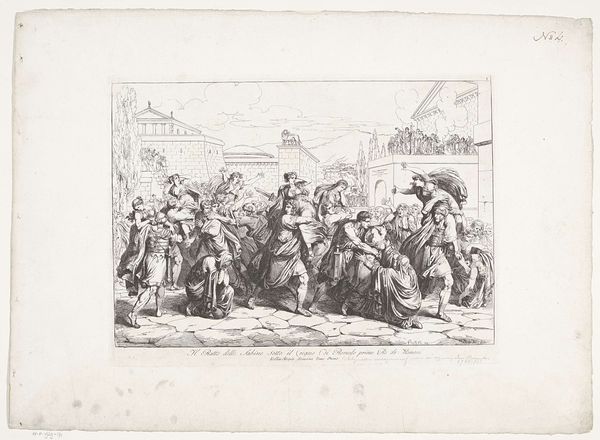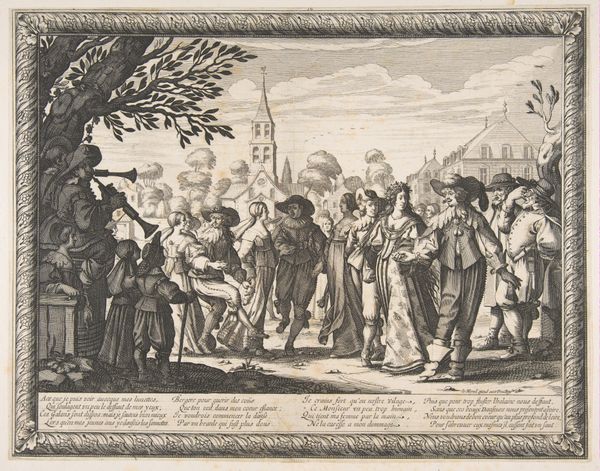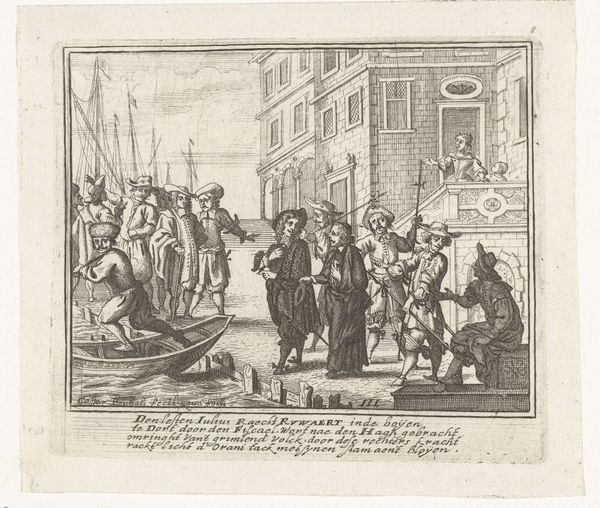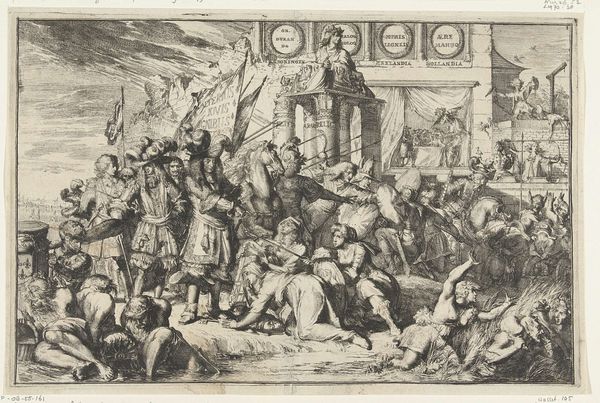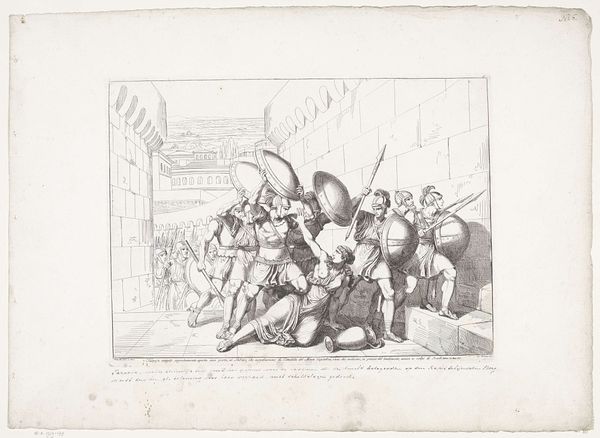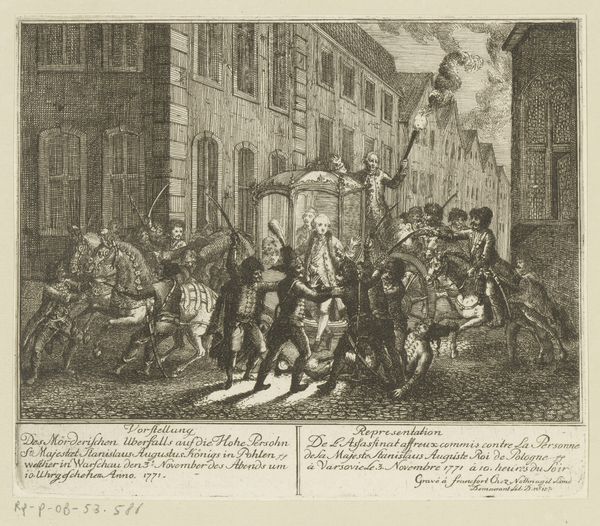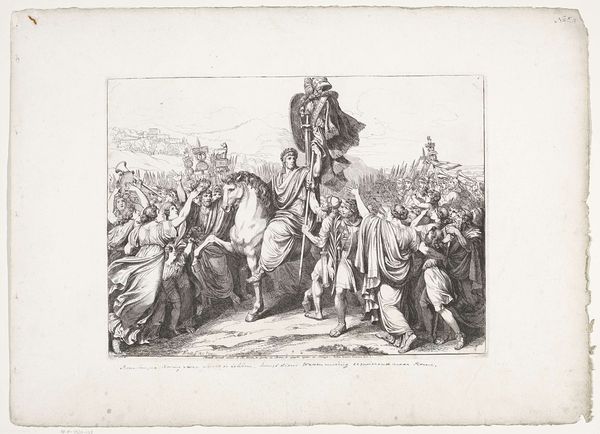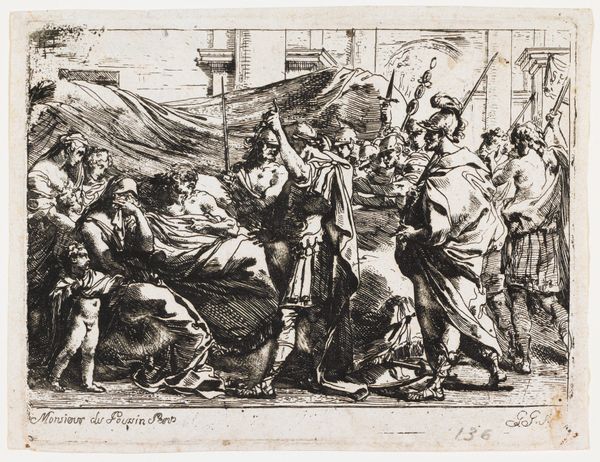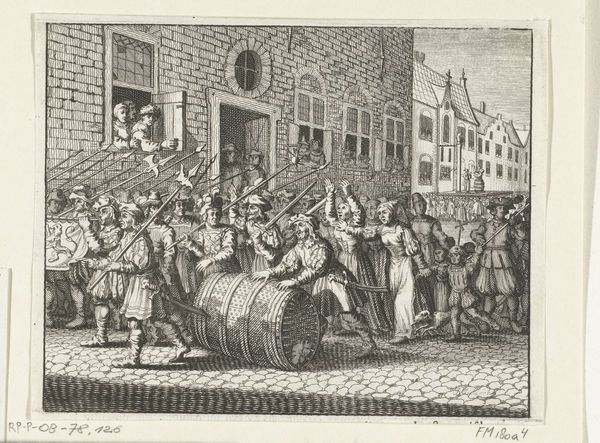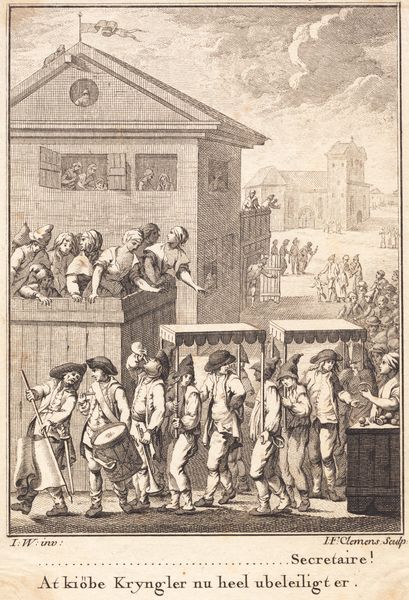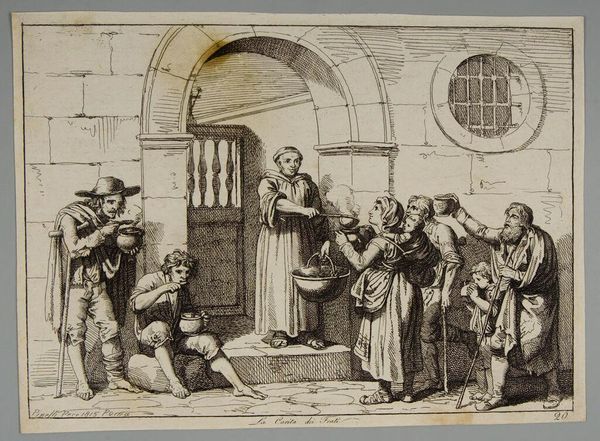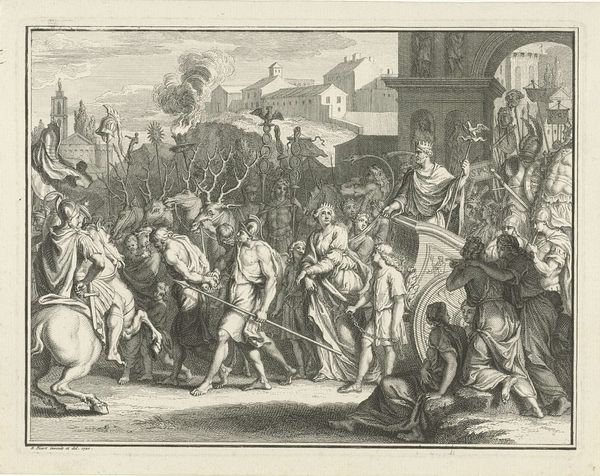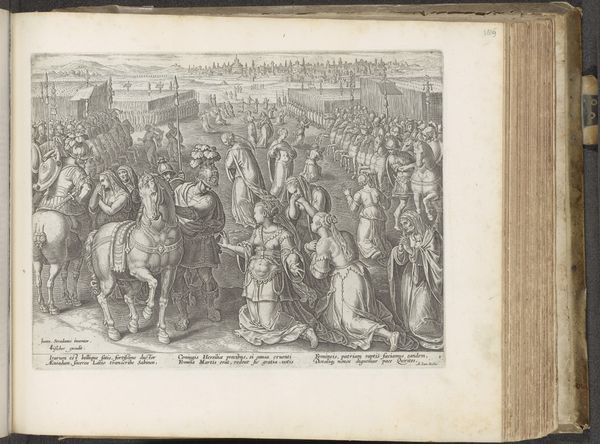
Meo Patacca challenges those who say badly about Rome with the weapon in hand (Plate ??/52) 1823
0:00
0:00
print, etching
#
16_19th-century
#
narrative-art
# print
#
etching
#
figuration
#
romanticism
#
genre-painting
#
history-painting
Copyright: Public domain
Curator: Today we’re looking at Bartolomeo Pinelli's etching from 1823, "Meo Patacca challenges those who say badly about Rome with the weapon in hand." Editor: My initial impression is of controlled chaos; the composition seems crowded, almost claustrophobic, yet the etching maintains an incredible level of detail and clarity in each figure. Curator: Pinelli was known for depicting Roman life, and here we see Meo Patacca, a character who embodies Roman bravado and working-class identity. This image, part of a series, captures the tension between local pride and the lived realities of early 19th-century Rome. Meo's challenging stance and drawn sword highlight his role as a defender of Roman honor, which can also be seen as connected with gender. Editor: The linear quality really stands out, defining forms with precision and creating a sense of depth, but it is very flat. The balance of light and shadow guides the eye through the narrative—you notice how the figures closest to the front have so much dark shade. Curator: Absolutely, Pinelli is presenting a hyper-masculine figure who protects his idealized Rome. The print serves as an important cultural artifact, encapsulating societal tensions. How are we to interpret these kinds of historical displays of honor and male aggression now? Editor: What strikes me is the effective use of line to convey expression and movement, almost to the point of caricature, which lends the piece a vibrant energy and immediate feel. Pinelli emphasizes their engagement with space with only lines. The formal elements truly reflect an energy that I believe mirrors a culture clash. Curator: That’s insightful. Focusing on his expressive qualities helps us see how it functions within a broader narrative of identity and resistance against those internal conflicts around early nationhood and Italian unification. Editor: I appreciate how your approach expands this, helping us to grasp Pinelli’s moment, the materiality, and also its potential reverberations within art history and today’s culture. Curator: Indeed. Pinelli's work offers layers of insight into that tumultuous period.
Comments
No comments
Be the first to comment and join the conversation on the ultimate creative platform.
